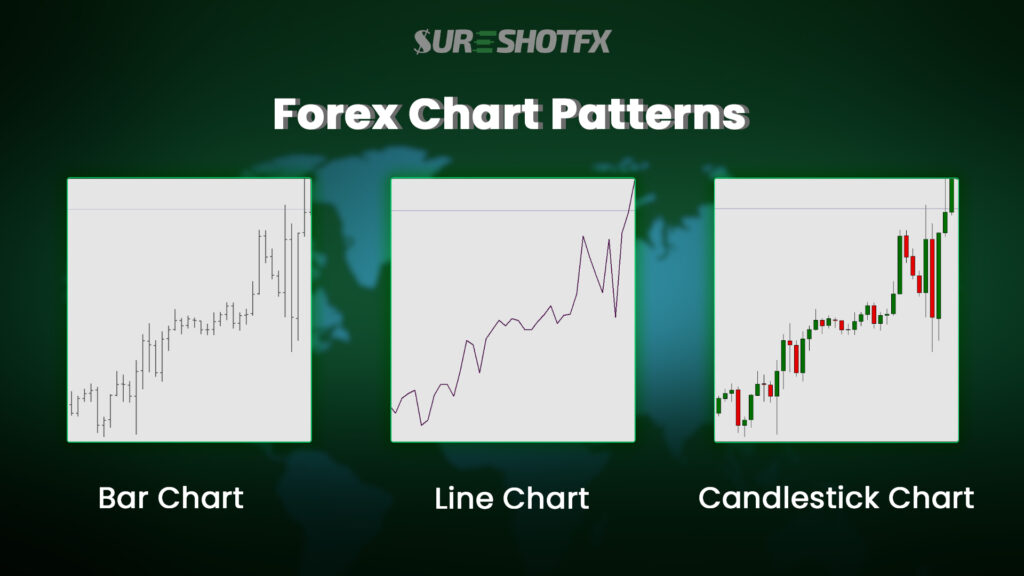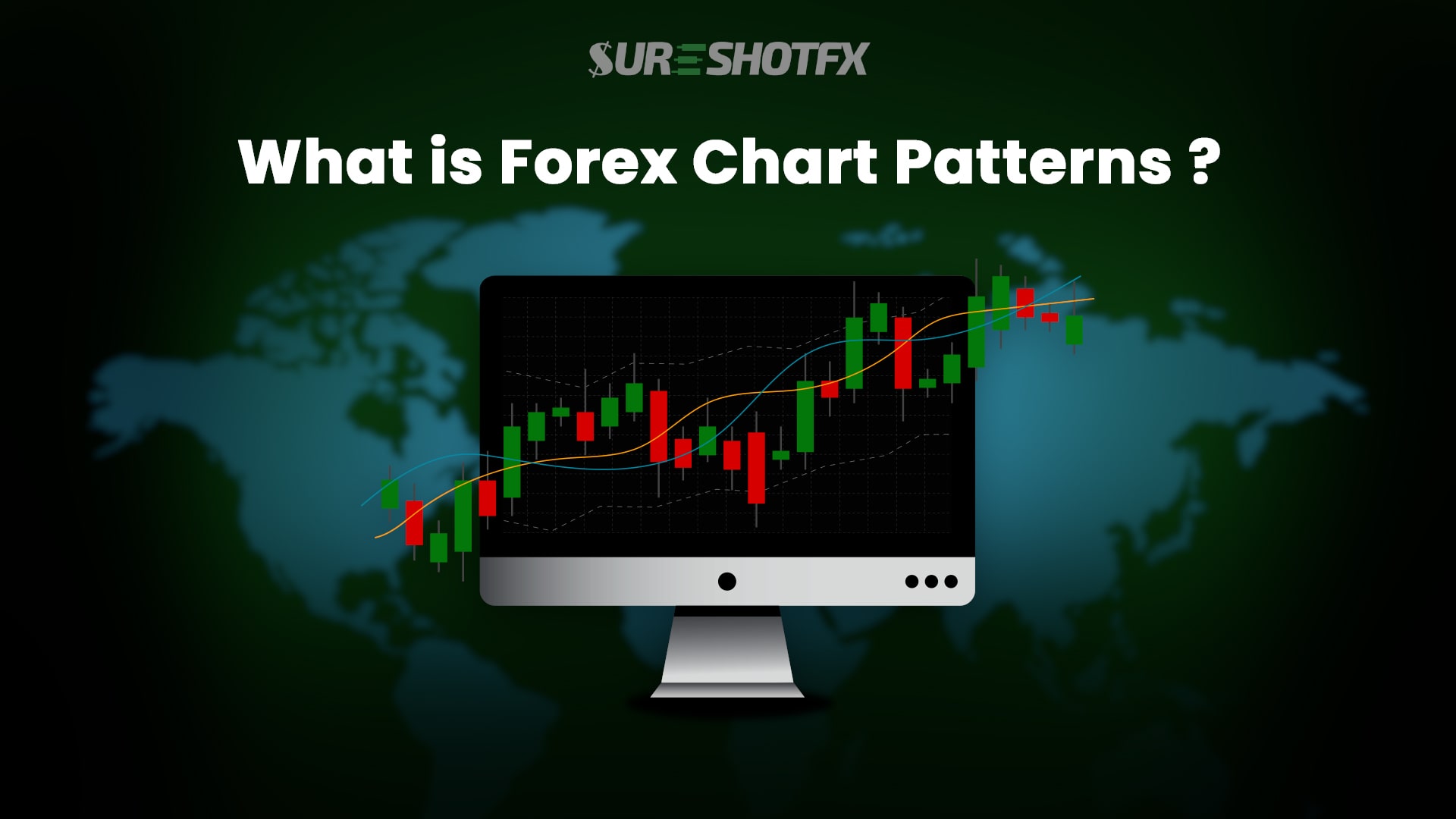11. What is Forex Chart Patterns? How to Use It?
One of the key elements of learning forex trading is to know how to use foreign currency chart patterns. There are many types of chart available in your trading platform. In this lesson, we will give you a brief explanation of each trade chart pattern types. You can choose which chart pattern suits you the best.
Forex charts represent the timeline of each forex pair over a long period of time. You can view charts in daily, weekly, and monthly timeframes. They help you discover market trends and potential trade opportunities. So, you better know how to read and analyze the price charts properly.
What are the Chart Patterns in Forex?
Understanding Forex chart patterns is easy. With few self-explained terminologies known- you are good to go. Let’s explore them together:

01. Bar Chart:
A bar chart is a simple yet powerful way to visualize price change in the forex market. Each bar reflects a distinct time period’s price range. The vertical lines project high and low values and the horizontal lines reflect starting and closing prices.
The left edge represents where the price opened, and the right edge shows where it ended within a particular duration (such as an hour or a day). For example, a daily bar chart might display the highest, lowest, opening, and closing prices for each trading day.
To interpret a bar chart, traders look for the link between open, close, high, and low prices, which can provide vital information about market sentiment and probable future price moves.
02. Line Chart:
A line chart is a simpler representation of price fluctuations, with data points connected by a straight line. It’s similar to a connect-the-dots game but with prices. It simply joins the closing prices of each timeframe to construct a line that depicts the overall trend of a foreign currency pair.
This style of chart is especially useful for determining long-term trends and support/resistance points. For example, a weekly line chart may display the closing prices for each week, making it easier for traders to see patterns and potential turning points. It reduces the chaos of the Forex market into a smooth, continuous line, making patterns easier to identify.
If the line rises, prices are increasing, and if it falls, prices are decreasing. To read a line chart, traders look for the overall direction and slope of the line, as well as any noteworthy breaks or reversals in the trend.
03. Candlestick Chart:
Candlestick charts are among the most popular and informative charts used in the forex trading market. Each candlestick symbolizes a certain time period, usually a day, with the body signifying the opening and closing prices and the wicks (or shadows) representing the highest and lowest prices reached during that period.
A green or white candlestick represents a bullish time, with the closing price more than the opening price, whereas a red or black candlestick shows a bearish period, with the closing price less than the initial price. Candlestick patterns, such as the hammer, shooting star, and doji, can provide useful information about market mood and future trend reversals. Analyzing the size, color, and position of these candlesticks might help you spot prospective trading opportunities based on common bullish and bearish patterns.
Remember, each chart style has its own strengths and weaknesses. The key is to understand them all and choose the one that best suits your trading style and preferences.
How to Use Chart Patterns?
To become an expert FX chart reader, you must train your eye to identify key elements that have the potential to open successful trading opportunities.
- Start by analyzing the current trend; is the market in an uptrend, downtrend, or bringing together? Higher highs and higher lows indicate an uptrend, whereas lower lows and lower highs demonstrate a downtrend. These trends can occur across a wide range of time periods, from a single day to several years.
- Next, get comfortable with support and resistance levels – the Battle Lines where bulls and bears clash. Support levels show regions where buyers tend to enter, halting downward growth, whilst resistance levels represent ceilings where selling pressure begins. Identifying these critical zones will help you time your entry and exit accurately.
Finally, Start the practice of multi-timeframe analysis. Cross-reference several chart periods to get a complete picture of the market’s behavior. A trend over a longer timescale may suggest a more obvious direct bias, whilst smaller time frames may point out entry and exit points.
When it comes to choosing the best chart type for Forex trading, there is no one-size-fits-all answer. Each chart has its own strengths and weaknesses. However, as you gain experience, the Japanese candlesticks is going to be your ultimate guide to analyzing the market & providing significant insights into price fluctuations.
Whether you choose bars, lines, or candlesticks, the goal is to practice and find the chart that appeals to you. Practice, evaluate, and discover the trading style that best suits you.
This is what you learned today-
- Types of forex charts available in your trading platform
- Explanation and use of chart patterns in Forex
- Basics to get started with using charts for analysis



